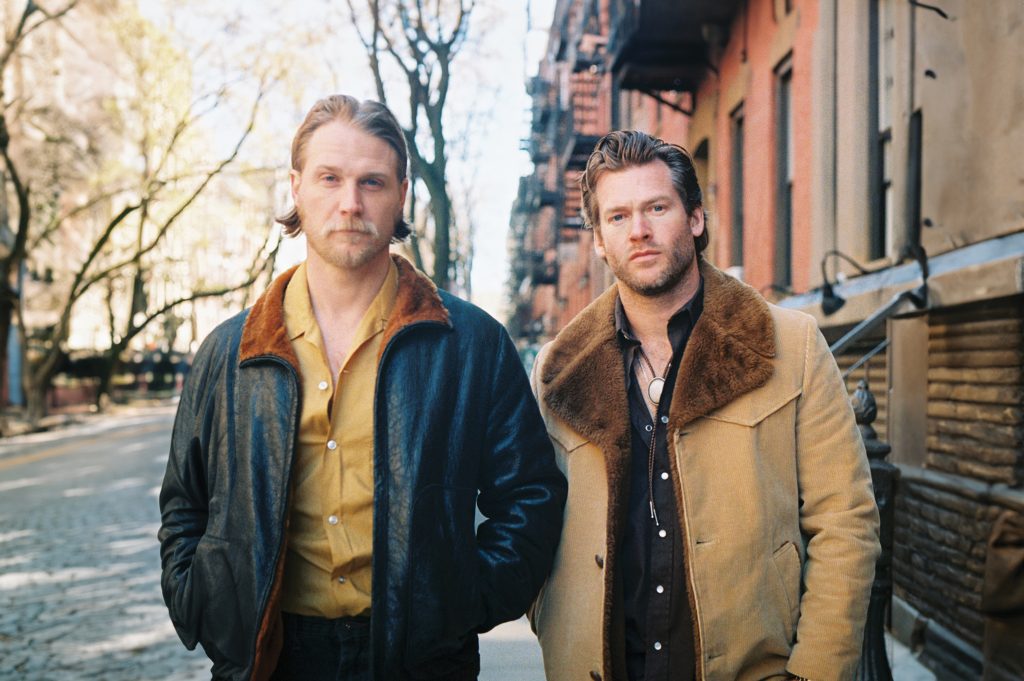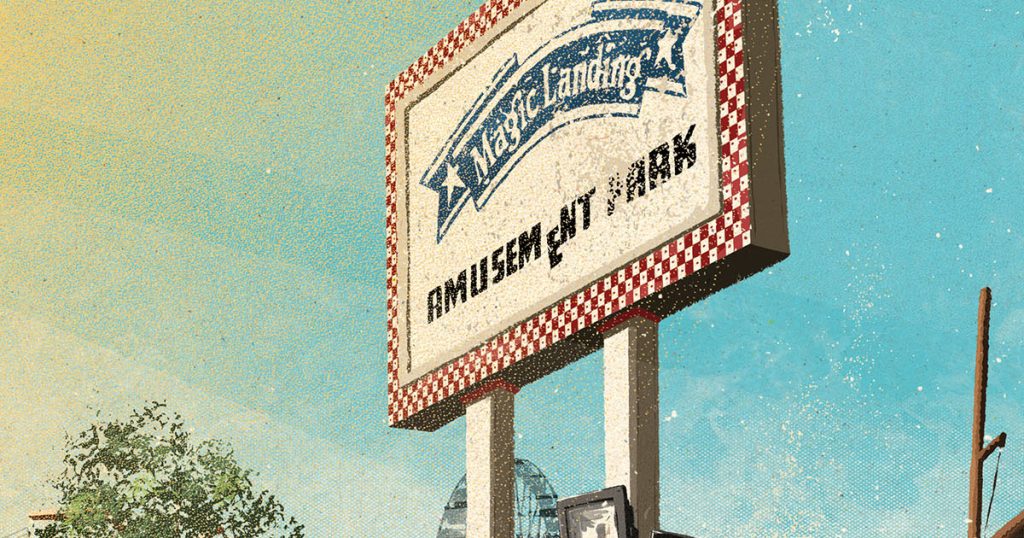The
Ghosts
of
Archer
City
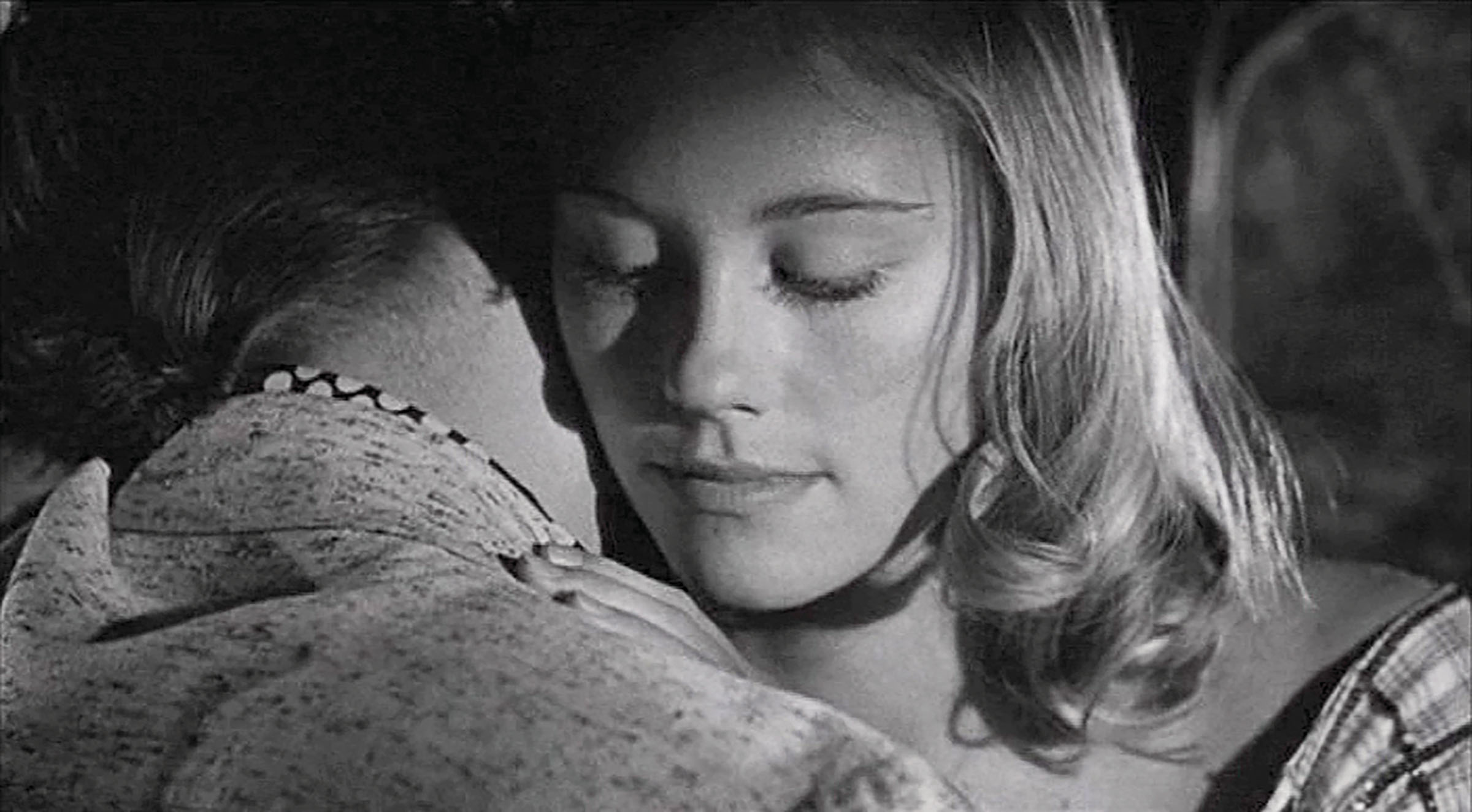
Fifty years ago, The Last Picture Show changed the way the world saw small-town Texas and, in turn, the way the small town saw itself
Jacy and Duane embrace (inset); A full moon rises above a barn on the fringes of Archer City.
S
Staring at the front of the Royal Theater, I feel as though I’m looking backward through time. Taking in the cerulean marquee, the painted red fringe around the box office, the vertical ROYAL sign jutting into the afternoon sky—it’s easy to imagine why the denizens of Archer County flocked here for decades. The theater was a dark, cool respite from the blazing sun, a still escape from the whipping winds of the North Central Plains, a glimpse of entertainment from the outside world.
The theater—or what’s left of it anyway—peers out from the northeast corner of the town square. Without the storied theater, this could be any small town in Texas. Weathered barns and rusted oil pumps dot the landscape. Anchoring the town is the imposing three-story Romanesque Revival county courthouse, with stone archways and provincial peaks. There’s also a small café (Murn’s), a blink-and-you’ll-miss-it police station, a few antiques stores, and a single four-way stoplight swaying in the breeze like an apparition.
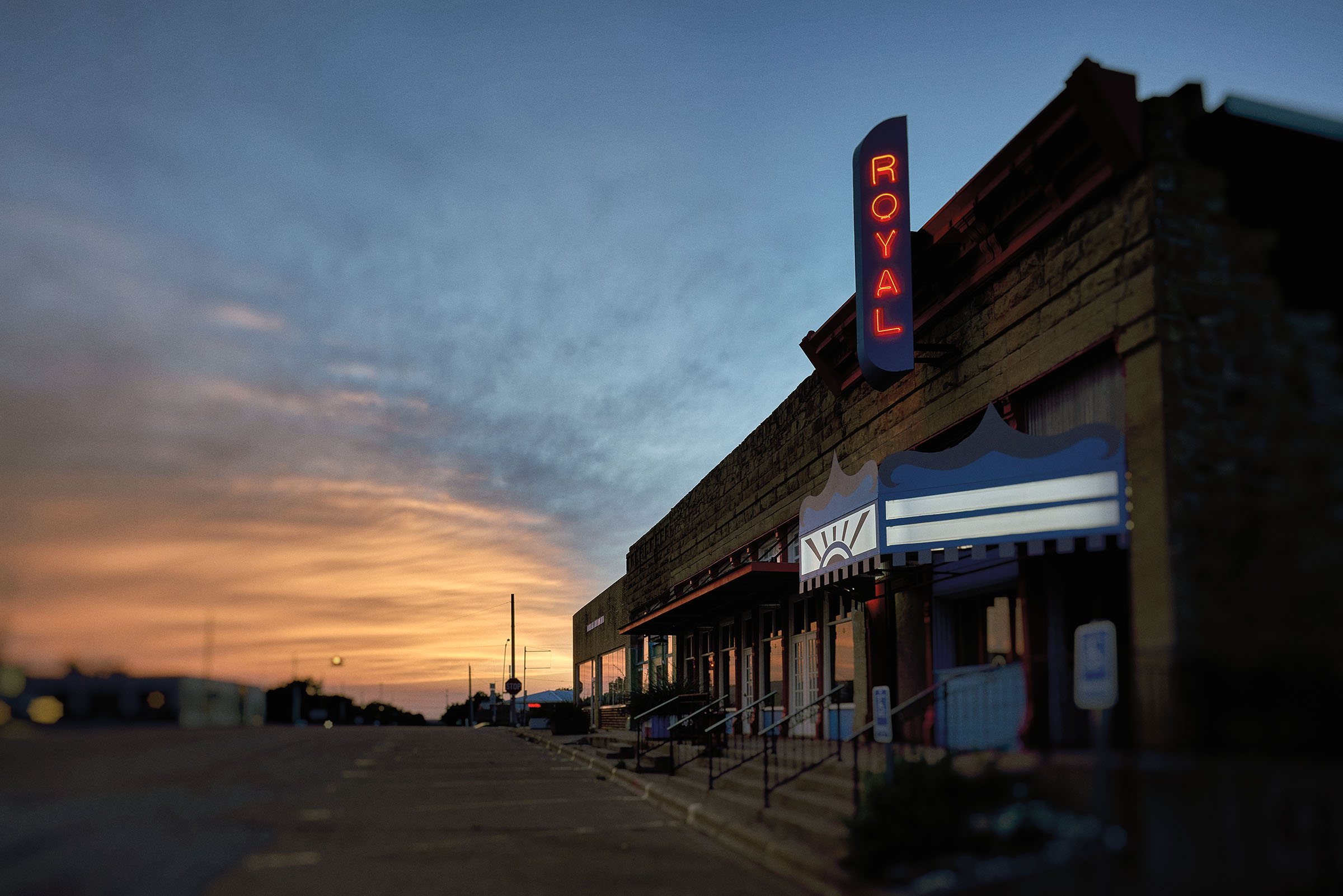
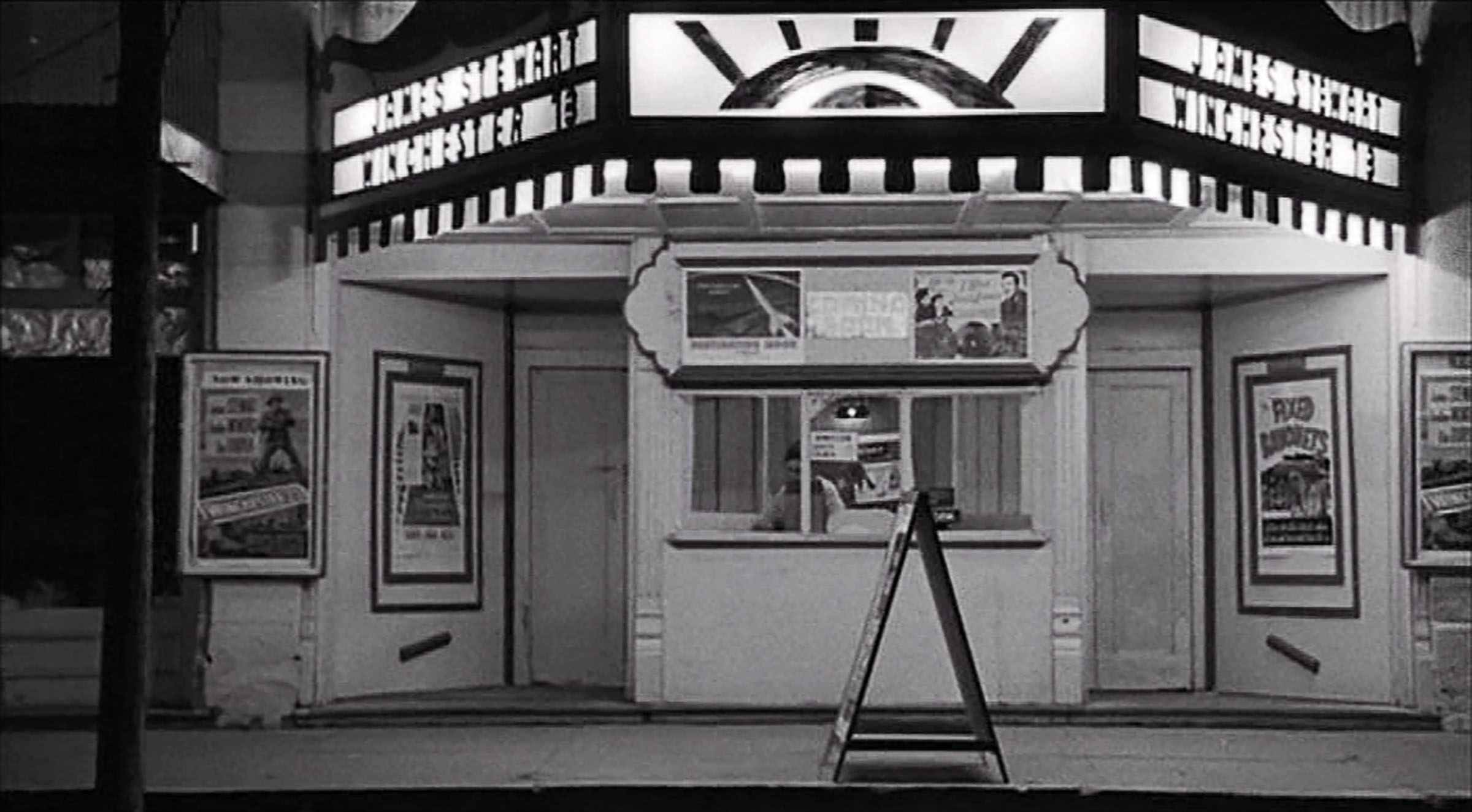
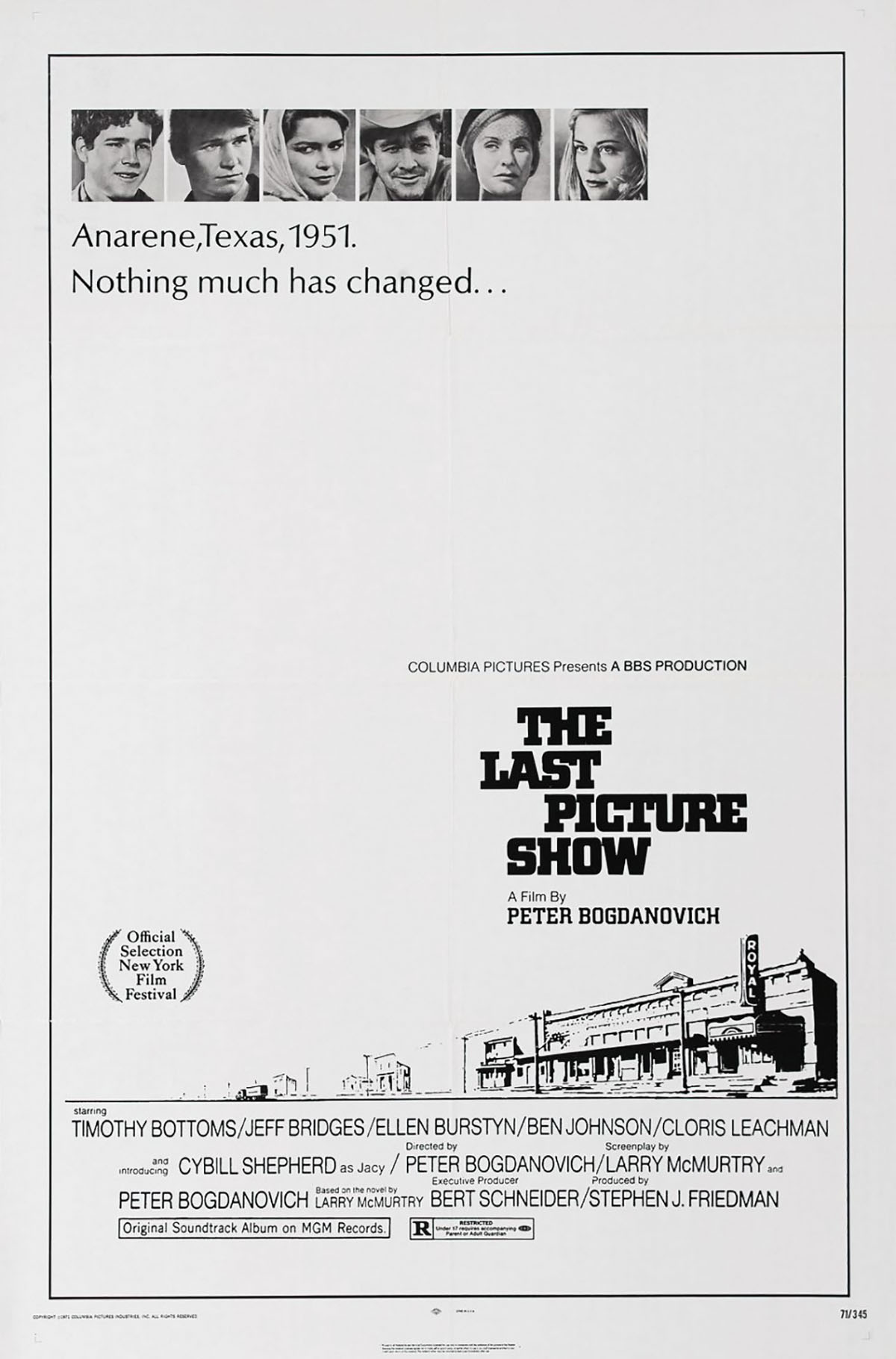 This isn’t just any small town in Texas, though. Archer City is the Texas small town. It’s the setting of both the novel and film versions of The Last Picture Show, a coming-of-age story rendered in black and white that earned eight Academy Award nominations, including Best Writing (Adapted Screenplay), Best Directing, and Best Picture. In Larry McMurtry’s book, published in 1966, the town is called Thalia. In the movie, directed by Peter Bogdanovich and released in 1971, it’s called Anarene—a name taken from an abandoned town 8 miles away. But rest assured, both places are Archer City: the looming courthouse, the blinking stoplight, and the Royal Theater, where so many of the most dramatic moments of The Last Picture Show take place.
This isn’t just any small town in Texas, though. Archer City is the Texas small town. It’s the setting of both the novel and film versions of The Last Picture Show, a coming-of-age story rendered in black and white that earned eight Academy Award nominations, including Best Writing (Adapted Screenplay), Best Directing, and Best Picture. In Larry McMurtry’s book, published in 1966, the town is called Thalia. In the movie, directed by Peter Bogdanovich and released in 1971, it’s called Anarene—a name taken from an abandoned town 8 miles away. But rest assured, both places are Archer City: the looming courthouse, the blinking stoplight, and the Royal Theater, where so many of the most dramatic moments of The Last Picture Show take place.
The novel, which McMurtry called a “spiteful” book intended to “lance some of the poisons of small-town life,” received critical acclaim when it was published. But it was Bogdanovich’s film that truly introduced the entire world, in utterly unromanticized fashion, to the intense, sweeping sagas of everyday life in Archer City. The Last Picture Show turned this particular and peculiar town into art.
Both the novel and movie contain language that was considered lewd at the time. McMurtry’s own mother, Hazel, once said that after reading the first 100 pages she hid the book in the closet and called her son that night. “Larry, honey,” she said to him, he revealed in his 2002 travel memoir Paradise, “is this what we’re sending you to Rice for? Those awful words!”
The film, with its nudity and frank depiction of teenage sexuality—including Cybill Shepherd’s first and only topless scene—absolutely scandalized upright, moral Americans all over the country. Nowhere more so than in Archer City, where it was regarded at the time as a “dirty” movie.
Now, 50 years after the film’s release, the town’s past dalliances with Hollywood are somehow simultaneously scuttled and omnipresent. There’s no billboard at the city limit announcing the place’s cultural significance, no notation on the water tower. But there are echoes of the art formed here, about this place, along every street, around every corner. Some might even feel the spirit of McMurtry, who passed away in Archer City earlier this year.
Over the last five decades, Peter Bogdanovich, a New Yorker who operated in Los Angeles, has told the story of the movie’s origin many times. He’d seen the novel in a store, liked the title, saw what it was about, and immediately put the book back down. Then actor Sal Mineo, who’d starred alongside James Dean and Natalie Wood in Rebel Without a Cause, gave Bogdanovich a copy of the novel, saying he thought it would make a good film. Bogdanovich still didn’t read it, but gave it to his wife, production designer Polly Platt, and asked her to read it. When she inspired him to finally read it himself, he was intrigued by the challenge of conveying small-town life in Texas and eventually co-wrote the screenplay with McMurtry. Bogdanovich, Platt, and McMurtry took a long road trip scouting locations in Texas, but ultimately the director realized he wanted to shoot the movie in McMurtry’s hometown.
Set in the early 1950s, the story follows three teenagers—the co-captains of the football team and the so-called prettiest girl in school—through their senior year of high school, as they each struggle to make sense of adult concepts like love and sex and the fragility of human life. Sonny Crawford is the sensitive, thoughtful boy from a broken home. Duane Jackson is Sonny’s lovelorn best friend who escapes first into the oil fields and then the Korean War. Jacy Farrow is the coquettish rich girl who yearns wholeheartedly for something beyond the confines of her surroundings. The Last Picture Show also famously includes an ensemble of carefully rendered adults trying to cope with their own expired dreams and broken lives.
McMurtry repeated over the years that the characters he created weren’t based on any real-life individuals, but the people of Archer City always suspected otherwise. A man named Bobby Stubbs, who was photographed with McMurtry in their high school yearbook, believed he was the inspiration for Sonny. Stubbs had a troubled home life and worked nights like Sonny, and he drove the same kind of pickup truck. He was also once hit in the eye by the boyfriend of a girl he liked. “It kinda pretty closely followed me,” Stubbs used to say.
A woman named Ceil Cleveland Footlick was often asked if she was the inspiration for Jacy. She was “very good friends” (her words) with Stubbs and had been voted “Most Beautiful Girl” in her class. For years she brushed off the question, but in 1997 she published a memoir with the title Whatever Happened to Jacy Farrow?
Because of the book’s reputation, getting actors to audition was a challenge. Randy Quaid was cast as Lester, an awkward, sleazy suitor of Jacy’s. He’d only read the parts of the script that involved his character, which mostly centered on Lester taking Jacy to a naked swimming party. “I just thought it was going to be like this B-movie, teenage, soft-porn movie,” Quaid would later say. “Something you’d see at the drive-in.”
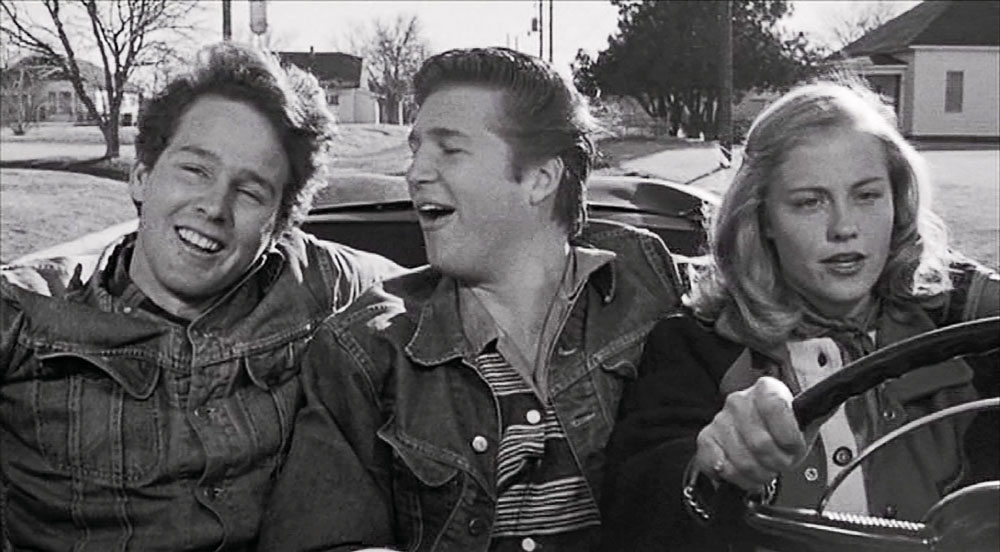
Sonny, Duane, and Jacy come of age in Anarene
None of the young stars had much experience in film. Timothy Bottoms, who’d only been in one movie before, was cast to play Sonny. Jeff Bridges, cast as Duane, had been a professional actor nearly all his life, but at 21 years old, this would be his first major film role. And Bogdanovich cast Shepherd as Jacy after seeing her face on the cover of Glamour magazine.
Most of the adults in the movie were played by established Hollywood actors, including Cloris Leachman, Ellen Burstyn, and Eileen Brennan. For the role of Sam the Lion, the wisdom-dispensing owner of the town’s pool hall, Bogdanovich cast Ben Johnson, the champion-rodeo-cowboy-turned-stuntman-turned-Western-movie-icon. At first Johnson turned down the part on account of the foul language, but Bogdanovich called in a favor from his director friend John Ford, who convinced Johnson to do it.
Almost as soon as filming started, real life began imitating the art being created. While making a movie about illicit sex and barely veiled scandal, the set was awash in illicit sex and barely veiled scandal. The actors spent a lot of time drinking and smoking together in their hotel rooms 30 minutes north in Wichita Falls, and that led to drama. Bottoms fell in love with Shepherd. Bogdanovich started an affair with Shepherd, dissolving his own marriage while his wife, Platt, continued to work on the movie. (Most mornings Platt styled Shepherd’s hair.) “It was quite a soap opera,” Burstyn said in the documentary Picture This: The Times of Peter Bogdanovich in Archer City, Texas.
This was everything the locals had feared: all the immoral luridness of Hollywood, right here in a part of Texas not so comfortable with unwholesomeness that didn’t stay behind closed doors.
Outside of Archer City, it was a different story. The movie received great reviews from coast to coast. Johnson won the Oscar for Actor in a Supporting Role and Leachman won for Actress in a Supporting Role. The film is still beloved today and maintains a spot in the coveted National Film Registry.
But at the time of its release, most of the locals disapproved. Strongly. The Los Angeles Times ran a story about it with the headline “Movie Riles Town It Depicts.” McMurtry, who was involved in Bogdanovich’s vision, eventually got so annoyed by the vicious gossip in town that he sent a letter to the editor of the Archer City newspaper, challenging anyone in town to a public debate.
His offer went unrequited.
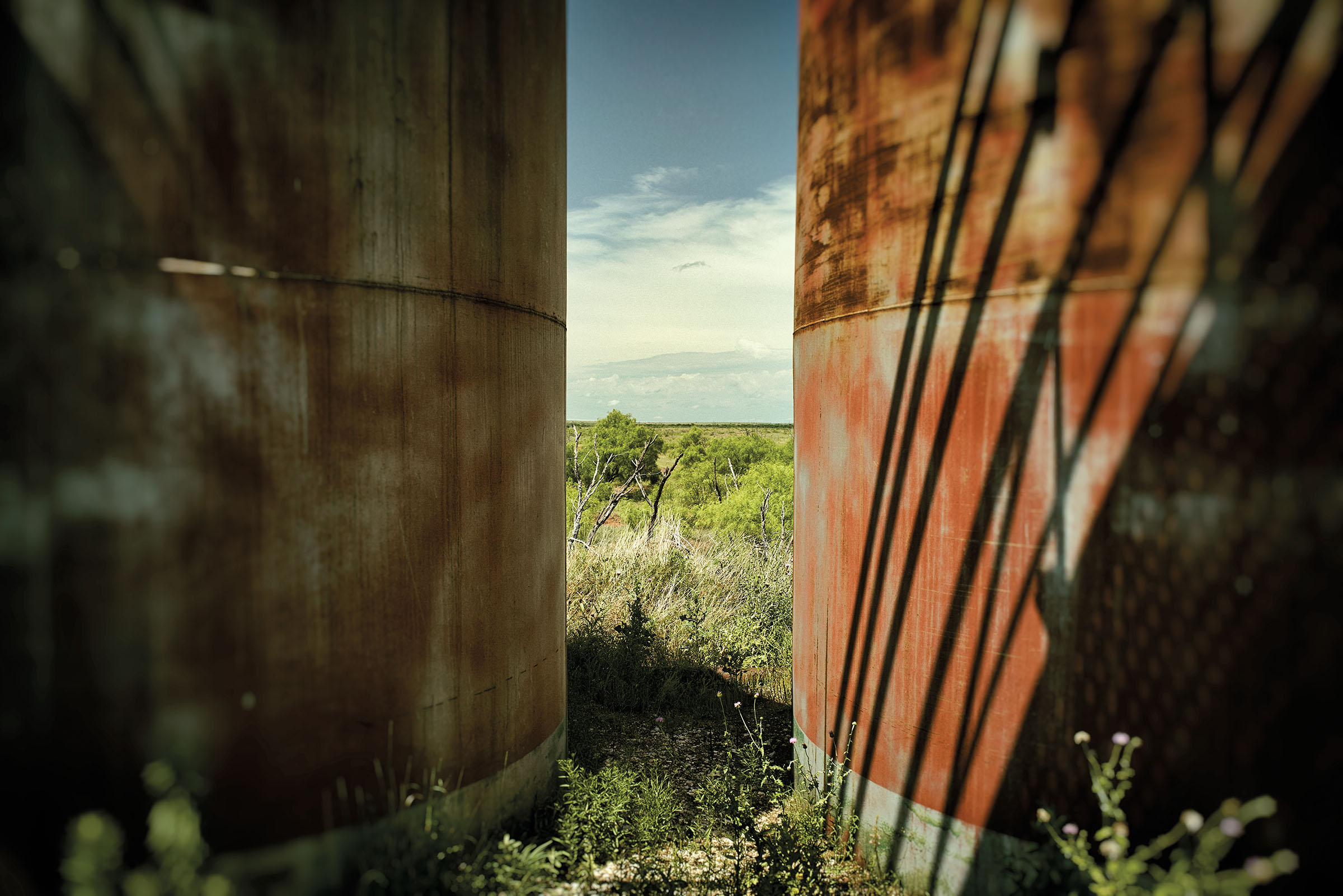
Archer City’s population is 1,848, only a couple hundred larger than it was when McMurtry grew up there in the ’30s and ’40s. The town is the seat of Archer County, created in 1858 by the Texas State Legislature and named after Branch Tanner Archer, former secretary of war of the Republic of Texas. Ranching and oil have long been the predominant industries—by late 1926, there were more than 400 oil wells within 13 miles of Archer City—but many people are increasingly attracted to the town for its proximity to prime hunting.
Many of the locations where The Last Picture Show was filmed are gone now. Where Sam’s dusty pool hall once stood, with its door flapping in the wind, there’s nothing but an empty dirt lot. The Rig-Wam Drive Inn, the burger joint where Jacy dangled french fries over Duane’s head as if he was a trained seal, is just a plot of asphalt and patchy grass. The West-Tex Theater in the neighboring town of Olney, used for the interior movie theater scenes, was torn down in the mid-’80s. Today it’s a small, quiet park with a gazebo.
Some places are still here, but different. The restaurant where Brennan’s character worked turned into Booked Up No. 4, one of four bookstores McMurtry set up around the town square before shuttering all but one in 2012. The high school has some of the same old features, though it’s been updated and decorated with a handful of granite statues marking state titles the school has won through the years.
McMurtry in Hollywood
The Last Picture Show wasn’t the first movie based on a novel by Larry McMurtry, and it certainly wasn’t the last. You might be
surprised by just how many films and TV shows have been made from his novels. Here are a few:
Hud, 1963 (based on Horseman, Pass By)
The Last Picture Show, 1971
Lovin’ Molly, 1974 (based on Leaving Cheyenne)
Terms of Endearment, 1983
Lonesome Dove, 1989
Texasville, 1990
The Evening Star, 1996
Much of the town looks and acts remarkably like it did when The Last Picture Show was made. Boys about the age of Duane and Sonny still speed through town in pickup trucks. Men the age of Sam the Lion still stop them to talk about football. The dance hall at the American Legion, where Jacy and Duane twirled around the room and Sonny ran into his estranged father, looks like it could host the same event today. On a recent evening, four or five locals were perched on barstools, sipping cold beers, listening to songs on the jukebox. They got rid of the old Wurlitzer years ago, but the updated digital version there now still plays all the Hank Williams Sr. songs from the movie.
In time, feelings in Archer City softened a bit. Mostly, the people here don’t talk much about the movie, or about McMurtry, the town’s most famous son. You can spend all morning at Murn’s Café and all night at the American Legion, the only bar in town, and never hear The Last Picture Show mentioned once. It’s not the source of tension it once was.
The public change of heart was most apparent in 1989, nearly 20 years after The Last Picture Show was filmed, when Bogdanovich returned to Archer City to shoot the sequel, Texasville, based on a book of the same name by McMurtry. This time the townspeople lined up to participate as extras. People came from miles away to sell concessions or to take photos or just get a glimpse of the nearly $20 million production.
“The bad taste that the movie left for some folks, that’s gone now,” then-high school principal Nat Lunn told the Austin American-Statesman at the time. “Especially with money being short in town, they’re ready for another dose of Hollywood.”
By the late 1980s, the three leads in the first film—Bottoms, Bridges, and Shepherd—had all become stars. While the entire budget for the first movie was around $1.3 million, Shepherd alone was paid $1.5 million to reprise her role. Bridges was reportedly paid $1.75 million. Bottoms, who’d complained publicly about Bogdanovich and said he didn’t like any of his co-stars, would only agree to return if he was given an additional $100,000 to fund the Picture This documentary.
In the two decades since the first movie, Bogdanovich’s career had soared and crashed. He and Shepherd had broken up; he went on to have multiple relationships, and she had two divorces. Bottoms was also divorced and remarried, but on the set he confessed the crush he’d had on Shepherd. Platt returned, too, and brought the 21-year-old daughter she and Bogdanovich shared. It became a grand, twisted Hollywood reunion, right there on the streets of Archer City.
Drawn by the potential spectacle of what was by then some sort of love-octagon, media outlets from across the country sent reporters to town. There were long feature stories in both Entertainment Weekly and the Los Angeles Times. By all accounts, though, the entire production served as a therapeutic experience, healing the wounds of the past. At one press conference, the often-sullen Bottoms hugged Bogdanovich. Behind-the-scenes footage caught Shepherd hugging Bottoms. Residents of Archer County took photos of themselves on the set.
But when the movie was released, it tanked. It received middling reviews, earned back only a fraction of its budget, and even today it’s not easy to find on any of the major streaming services.
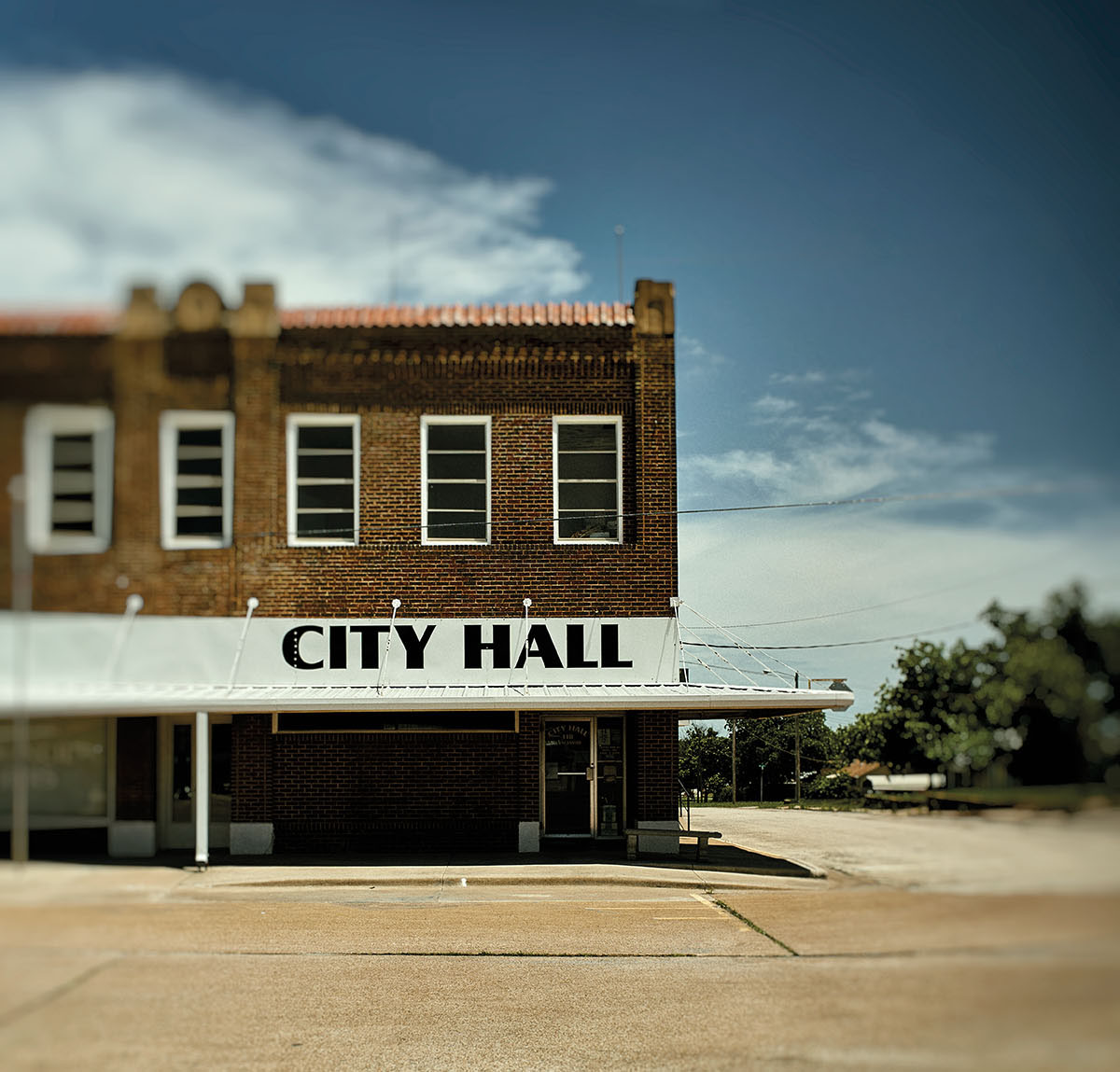
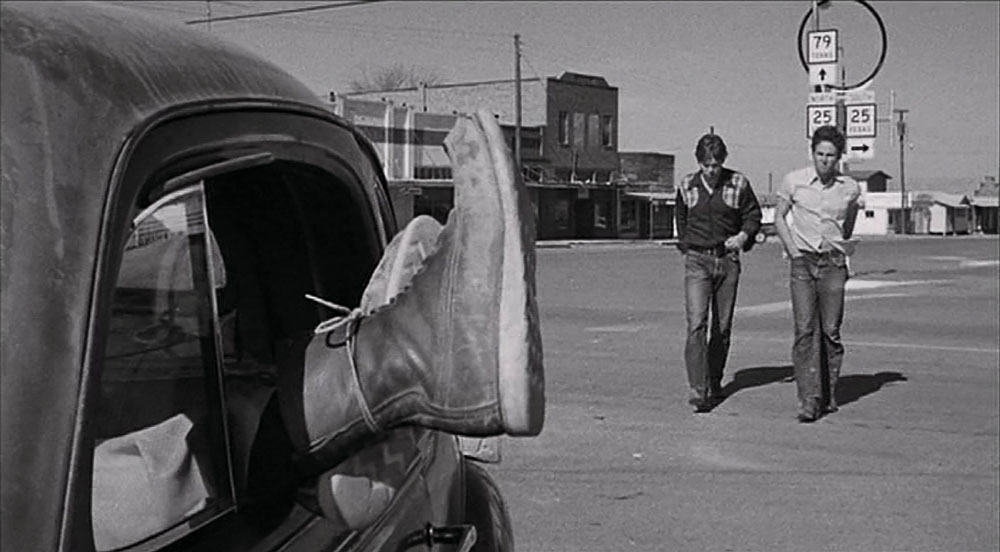
A lot of people associated with The Last Picture Show are dead now. Stubbs, who claimed to be the basis for Sonny, died in 1992. Johnson in 1996. Sam Bottoms, the real-life younger brother of Timothy Bottoms who played the mute boy Billy, died in 2008. Platt, the producer and production designer who somehow never pulled Shepherd’s hair, died in 2011. Then Brennan in 2013.
In January of this year, Footlick, the woman who wrote about being the real Jacy Farrow, died in North Carolina. Leachman died almost two weeks later. And on March 25, McMurtry, the writer who created all this beautiful trouble, died at the age of 84.
A few days after his death, nobody answered the doorbell at his house in Archer City, a majestic, three-story mansion just down the road from the high school. Looking through the front window, everything seemed to me to be just the way he left it, from the table made from a giant dinosaur fossil to the towering shelves of books in every room. McMurtry bought this place, the biggest home in town, after he won the Pulitzer Prize for Lonesome Dove. He’d wake up early in the morning, type for an hour and a half or so at his long oak table, then go to the bookstore to price antiquarian volumes. Most of the locals would leave him alone.
On the house’s front porch, a single rocking chair was situated to look out over the front yard into the surrounding neighborhood. Someone sitting there could see the comings and goings of a lot of people. As the early-evening wind moved through, the chair began to rock ever so gently.
These days, I sense the people of Archer City think differently of The Last Picture Show. It’s a part of the town’s story, just like the cattle industry and state titles. The movie is even mentioned on the town’s website, though it’s certainly not prominent.
There’s also a tiny park just off the square with a fiberglass horse covered in brands from local ranches and a display that chronicles a bit of the town’s history. The welded metal wall has separate panels for the town’s founding, the first successful oil well drilled here, and the giant fire that swept through in 1925. There’s also a panel explaining how the town was the filming location for The Last Picture Show and Texasville. Bogdanovich’s last name is misspelled.
A couple hundred feet away is the Royal Theater. Most of the building is a burned-out hull, popular for weddings, photo shoots, and occasional performances. The front of the building has been restored, though. It looks just like it did in the movie, the image that begins and ends the film. It’s haunting and beautiful, weathered and damaged—but still here, still standing, still looking at that single blinking light swaying in the wind.
